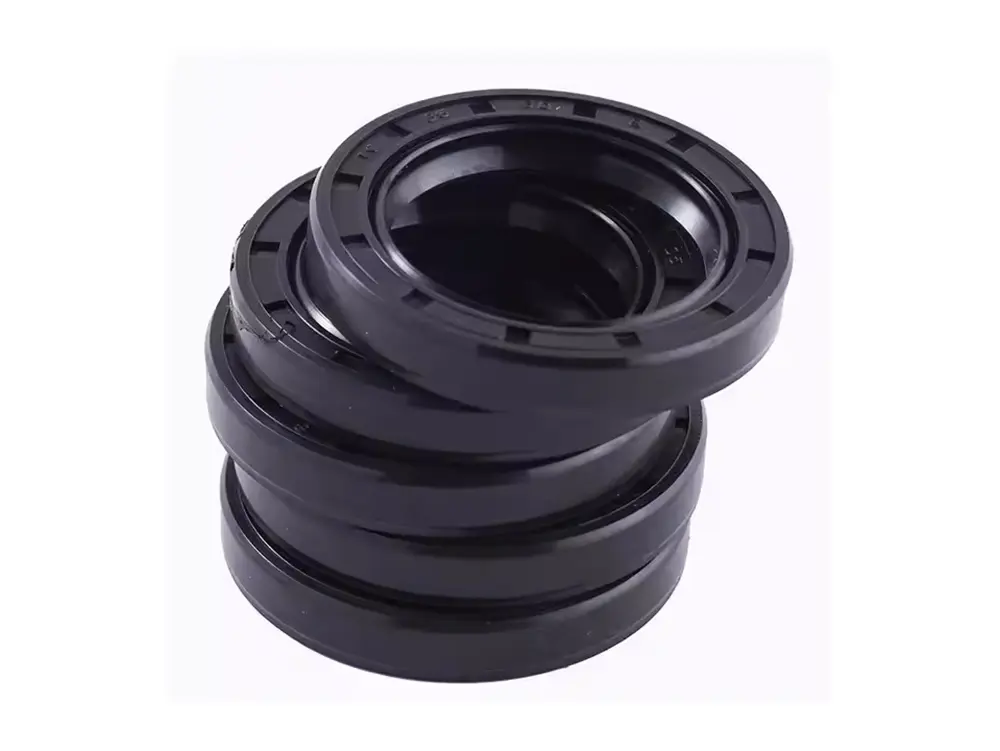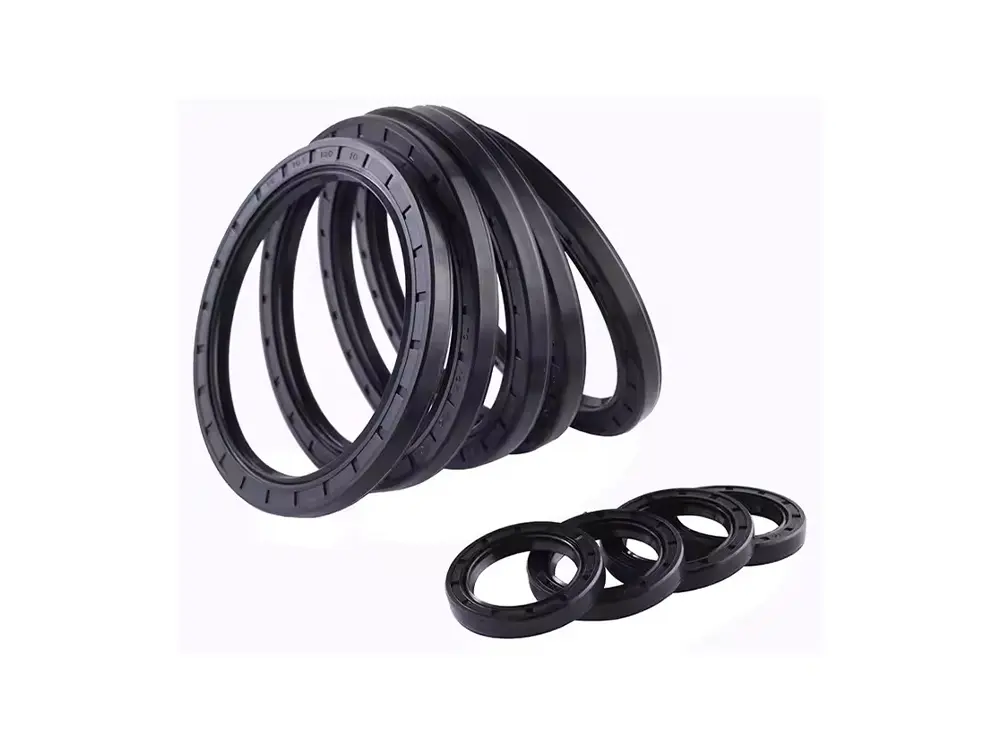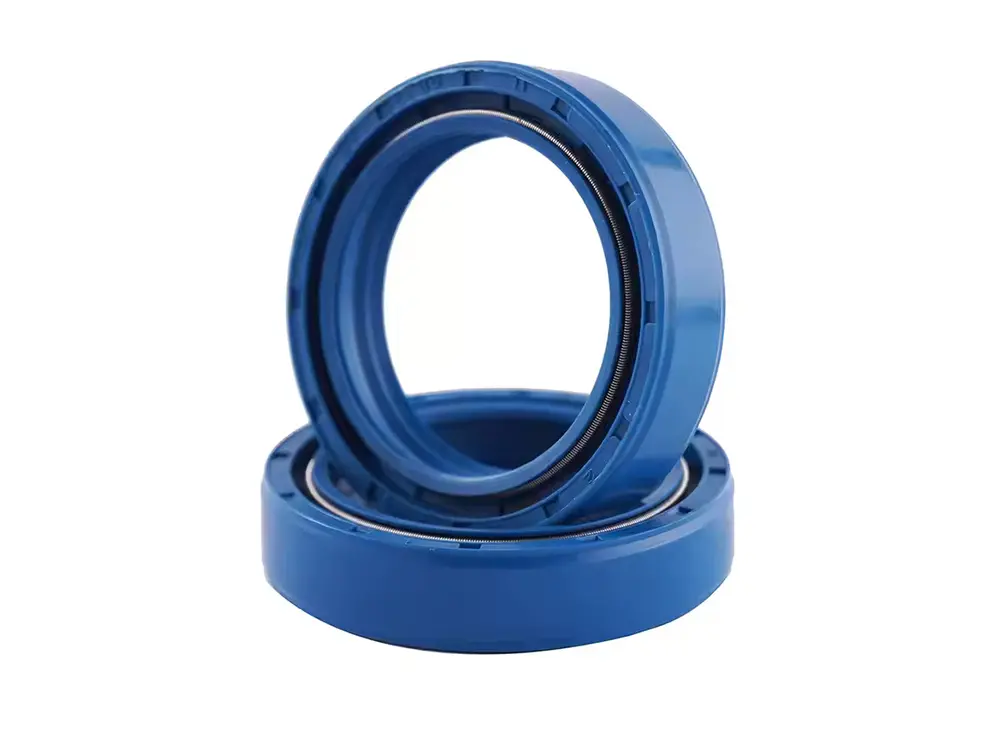Bearing Oil Seal
Product parameter
|
Material |
Hardness |
Temperature |
Property |
|
SIL/VMQ |
50A |
Extreme temperature -60℃-250℃ |
High and low temperature resistant Commonly used in food grade FDA |
|
NBR |
Standard 70A Customizable 40A-90A |
Extreme temperature -40°C-120°C |
Oil and wear resistant |
|
FKM/VITON |
Standard 70A Customizable 50A-90A |
Extreme temperature -40°C-240°C |
High temperature resistance, oil resistance, chemical resistance |
|
EPDM |
Standard 70A Customizable 40A-90A |
Extreme temperature -40°C-150°C |
Strong acid and alkali resistant, 150° water vapor resistant Aging resistant, ozone resistant High temperature resistant, low temperature resistant Commonly used in food grade FDA |
|
HNBR |
Standard 70A Customizable 40A-90A |
Extreme temperature -40°C-120°C |
Wear-resistant, oil-resistant, refrigerant-resistant (air conditioning) Resistant to polar solvents, good deformation resistance |
|
CR |
Standard 70A Customizable 40A-90A |
Extreme temperature -40°C-120°C |
Ozone resistance, weather resistance Chemical resistance, aging resistance |
|
FVMQ |
Standard 70A Customizable 45A-70A |
Extreme temperature -60°C-177°C In dry environment, high temperature resistance can reach 232°C |
Oil resistance, acid and alkali resistance, heat resistance Cold resistance, high voltage resistance Atmospheric aging resistance, resistance to solvents |
|
FFKM |
Standard 70A Customizable 50A-90A |
Normally around 250°C Special formula can reach around 320°C-330°C |
Excellent performance Can be used in almost all harsh environments Has the same advantages as PTFE in high temperature resistance Chemical resistance, corrosion resistance, resistance to various solvents and elasticity as rubber |
|
PU |
Standard 70A Customizable 60A-90A |
Extreme temperature -40°C-90°C |
Wear-resistant, high pressure-resistant, aging-resistant, and hydrolysis-resistant |
Function
● Prevent leakage: Prevent the lubricating oil or grease inside the bearing from leaking out, ensure the bearing is continuously and effectively lubricated, reduce lubricant loss, and reduce maintenance costs.
● Isolate pollutants: Effectively prevent external dust, impurities, moisture, humidity and other pollutants from entering the bearing, prevent these pollutants from causing wear, corrosion and other damage to the rolling elements, inner and outer rings and other parts of the bearing, and extend the service life of the bearing.
● Maintain a stable working environment: Maintaining the lubrication inside the bearing and the stable working environment will help improve the operating accuracy and reliability of the bearing, reduce bearing failures caused by external interference, and ensure the normal operation of mechanical equipment.
| place of origin | Hebei,China |
| Brand Name | OEM |
| model number | Standard |
| Product name | Tc Fkm Rubber Mechanical Bearing Oil Seal |
| Standard or Nonstandard | Standard |
| Size | Standard Size and customized size |
| Feature | Oil Resistance |
| Application | Industry |
| Hardness | 20~90 Shore |
| Certificate | ISO 16949 |
| Production time | 5-7 days |
| Stock | have enough stock for selling |
| Color | Customers Requires |
| Sample | support |
Classification by the rotational speed of the shaft
● Low-speed oil seal: suitable for situations where the rotational speed is less than 6m/s, such as oil seals in some agricultural machinery and small motors.
● High-speed oil seal: used in situations where the rotational speed is greater than 6m/s, such as high-speed rotating engine crankshafts, turbine machinery shafts, etc.
Classification by pressure resistance
● Normal pressure oil seal: generally can withstand a pressure of less than 0.05MPa, often used for ordinary bearing seals, such as general mechanical transmission parts.
● Pressure-resistant oil seal: can withstand a pressure greater than 0.05MPa, suitable for high-pressure environments, such as shaft end oil seals of high-pressure pumps.
Classification by structure and sealing principle
● Standard oil seal: usually has a relatively simple structure, relying on the contact between the lip and the shaft to achieve sealing, such as ordinary single-lip or double-lip skeleton oil seals.
● Power reflux oil seal: angled oblique ribs are made on the air side of the lip, using the principle of fluid mechanics to produce a one-way pumping effect, with a reflux effect, which can reduce wear and heat generation.
Classification by component material
● There are skeleton oil seals: composed of metal skeleton and rubber and other materials. The metal skeleton is used to fix the oil seal to give it a certain shape and strength, and the rubber material is used to achieve the sealing function.
● Frameless oil seal: no metal frame, usually made of pure rubber or other elastic materials, with good flexibility and adaptability, can be used in some parts with irregular shapes or limited space.
● Spring-type oil seal: a spring is installed at the sealing lip, and the elastic force of the spring makes the lip better fit the shaft surface to improve the sealing performance. Common ones include TC-type skeleton oil seals.
● Springless oil seal: no spring is installed, mainly relying on the elasticity of its own material and the design of the lip to achieve sealing, suitable for low-speed and low-pressure working conditions
Classification by specific structural form
● Ordinary single lip B (SC): generally used for high- and low-speed rotating shafts and reciprocating motion sealing of mineral oil and water and other media, used in situations where dust and impurities are relatively small.
● Ordinary double lip FB (TC): in addition to the use characteristics of S-type oil seals, it can also prevent dust, with dustproof lips can prevent dust, and withstand medium pressure < 0.05MPa.
● Springless type BV: Single lip type inner skeleton rubber oil seal without spring, generally suitable for low-speed working conditions, the sealing medium is lubricating ester.
● External skeleton single lip type W: Single lip exposed skeleton rubber oil seal with spring, thin waist, good tracking, good rigidity, used in conditions with less dust and impurities.
● External skeleton double lip type FW: Double lip exposed skeleton rubber oil seal with auxiliary lip, thin waist, good tracking, high rigidity, good coaxiality, dustproof.
● Assembled single lip type FZ: External skeleton oil seal made of inner and outer skeletons assembled with rolling edges, with high installation accuracy, fast heat dissipation, and heavy load characteristics, suitable for heavy load conditions under high temperature and high speed conditions.
Types
● Contact seals: including felt seals, V-shaped seals, Z-shaped seals, oil seals, end covers, double-layer lip seals, etc., which are in direct contact with the shaft or bearing parts to achieve sealing.
● Non-contact sealing rings: such as round rope labyrinth seals, gap seals, oil groove seals, labyrinth seals, etc., avoid the friction problem of contact seals by forming a labyrinth channel or utilizing gaps to achieve sealing, and are suitable for high-speed rotating bearings.
Application
● Mechanical equipment: In various mechanical equipment such as automobiles, motorcycles, and engineering machinery, it is used to prevent lubricating oil leakage and ensure the normal operation of the equipment. For example, the wheel hub bearings, engine bearings, transmission bearings and other parts of the car need bearing oil seals to prevent grease leakage and the entry of external dirt and water, reduce friction and noise, and improve fuel efficiency and safety.
● Aerospace: Used to seal various precision bearings to ensure the stable operation of equipment at high altitudes and extreme environments. For example, the bearing seals of aircraft landing gear must resist high-temperature carbonization of hydraulic oil and must pass relevant military standards certification; the bearing seals of rocket fuel valves must be able to achieve zero leakage in transient switching from extremely low temperature to high temperature.
● Shipbuilding: Used to prevent the mixing of seawater and lubricating oil and protect bearings from corrosion and wear. For example, the stern shaft seal of a ship's propeller must withstand seawater corrosion and biological attachment to ensure 10 years of maintenance-free.
● Precision instruments: In precision machine tools, optical instruments and other precision instruments, it is used to maintain the accuracy and stability of the equipment. For example, the bearing oil seal in the semiconductor etching machine must be ultra-clean to ensure that the vacuum chamber meets the high-level sealing requirements; the bearing oil seal of the medical CT machine must have a silent design and no silicon precipitation characteristics to meet the requirements of the operating room environment.
● Home appliances: In home appliances, such as washing machines and refrigerators, it is used to prevent lubricating oil leakage and increase the service life of the equipment. For example, the bearing oil seal of the washing machine must be able to withstand frequent start-stop and certain vibrations to prevent lubricating oil from leaking into the washing tub.
description2




